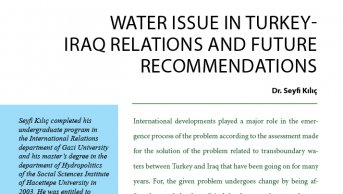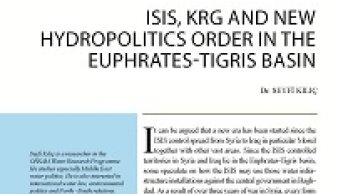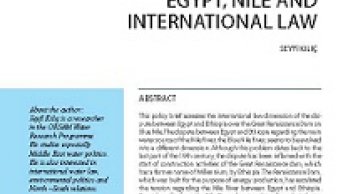Laos Dam Construction Might Affect Mekong River Commission

The Mekong River Commission (MRC), known as the Mekong Committee before 1995, is a noteworthy organization, as it has been performing trans-boundary water management, despite certain interruptions, since the time of the Cold War.
Nonetheless, there have recently been some developments affecting the existence and operation of this commission.
The mean annual discharge of the Mekong River is approximately 475 cubic kilometers, and it runs from the Tibetan Plateau through Yunnan Province in southwestern China. The river flows through Laos, Myanmar, Thailand, Cambodia and Vietnam before entering the South China Sea. It is the 10th largest river in the world in terms of volume discharged, and it is the largest river in Southeastern Asia. The Mekong River runs 4,200 kilometers from the Tibetan Plateau to the Mekong Delta in Vietnam. Also, the river flows through the Lower Mekong Basin for 2,400 kilometers. The basin of the Mekong River drains a total land area of 795,000 square kilometers.
The Mekong River has a substantial hydropower potential. The estimated installed hydropower capacity is 37,000 MW and 150,000-180,000 Gwh per year. Nonetheless, many hydroelectric power plants that are currently under construction or partially completed as water resources development projects on the river are situated only in China. The aforementioned extraordinary hydraulic cycle of the Mekong River forces the basin countries to cooperate on the construction of storage structures. These structures regulate the flows that lead to highly damaging floods, store water for irrigation during the dry season and help the generation of hydroelectric power. In the dry season, the average flow of the Mekong River's main stem is calculated at 2,000 cubic meters per second. This figure might be considered sufficient for any purpose by world standards (the Euphrates River's average is 1,000 cubic meters per second). However, the majority of the Mekong River's water must be released for ecological purposes and the protection of the Mekong Delta in Vietnam from salt intrusion. The basin countries have different views on the river. While Vietnam, the most downstream riparian country, attaches importance to the maintenance of ecological balance and agricultural activities as mentioned before, China, despite not being a member of the MRC, places importance on the generation of hydroelectricity. Laos, on the other hand, borders all the other Lower Mekong Basin countries. Being rich in natural resources, Laos can be seen as a major factor in the region's long-term economic development. Hydroelectric potential is one of the most significant elements of these resources. In this regard, several dams are being considered for construction on the main stem of the Mekong River. But these dams will have major environmental effects at the local and national level. The Laos government is against the states of the Lower Mekong Basin's belief that it is necessary to seek a settlement on the dams to be built on the main stem of the Mekong River.
Besides the disputed Xayaburi Dam, the Don Sahong Dam, whose construction was announced for the Cambodian border, brought up new disputes. Laos alleges that the dam, which will be built solely for electricity generation, is not situated on the main stem of the Mekong River. While the Mekong Agreement for Cooperation for the Sustainable Development of the Mekong River Basin, which established the MRC in 1995, envisages the operation of an advisory mechanism between the basin countries regarding the dams to be built on the main stem, it leaves out the tributaries from this system.
Laos, on the other hand, is planning to build the dam at a point where the main stem of the Mekong River splits into several tributaries, and asserts that the dam will not be located on the main stem. Despite reactions to the construction of the dam both internally and from other countries, the Laos government seems determined. On the other hand, there is support from certain basin countries for the project. China and Thailand especially offer political support to Laos on the issue. The disagreements regarding structures on the main stem of the Mekong River among the riparian countries may have the potential to affect the MRC, which is the strongest example of cooperation among riparian states, despite certain interruptions, for almost six decades.










